With the upcoming release of Warcraft at cinemas, Hollywood is trying yet again to adapt a popular game into a feature film franchise. One hopes this effort makes it over the hurdles slowing past attempts. After all, it hasn’t been an easy journey. Since the early 90s, there have been numerous features. Some have been box office hits, but none have proven to connect with critics. The current high water mark is Final Fantasy: The Spirits Within (2001), and most recently, The Angry Birds Movie (2016). Yet, both of these titles still have garnered far more negative reviews than positive notices.
On a tangent, I looked at board games that were turned into movies and noted that Clue (1985) ranked much, much higher with critics than any flick based on a video game. Despite dozens of attempts, this specific genre has been unable to equal even that of the board game movie adaptation. And that’s pretty sad. Perhaps there’s just something tricky about the process of taking on a specific property. Stray too far away from the source material and you’ve insulted fans. But follow closely and the experience becomes too familiar, lacking tension and genuine excitement.
At least there is some good news. There have been plenty of excellent films using games similar to and gaming as a plot element, even if none of them are based from a specific property. Somehow, casino-themed films are great, with the ambiance of being in a casino making the audience feel like they are actually playing. Meanwhile, for those who are having an itch to play casino games, a site like WSM Casino may be up your alley.
In this article, I’m going to go through and identify some noteworthy video game-related titles. Oh, and can you guess what feature the article cover photo is from? The answer is at the bottom of the page!
Movies Based on Specific Games
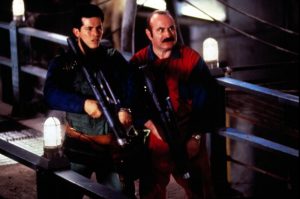 Super Mario Bros. (1993) – Things got off to an inauspicious beginning with this effort based on the Nintendo game. It follows two plumbers tasked with rescuing a princess from another dimension. There was a behind-the-scenes struggle too – the directors consistently clashed with the studio heads who wanted a different tone and the filmmakers also fought with the crew and performers. Script rewrites were occurring as the film was shot and the budget spiraled out of control. Stars Bob Hoskins and John Leguizamo have been quoted as saying they hated working on the film and knew it would be a disaster. It made back less than half of its inflated production expenses. Interestingly, Nintendo later commented politely on the finished product. They suggested that the movie may have tried too hard to recreate and reference specific elements of the video game when it might have been more advantageous to focus on its own narrative.
Super Mario Bros. (1993) – Things got off to an inauspicious beginning with this effort based on the Nintendo game. It follows two plumbers tasked with rescuing a princess from another dimension. There was a behind-the-scenes struggle too – the directors consistently clashed with the studio heads who wanted a different tone and the filmmakers also fought with the crew and performers. Script rewrites were occurring as the film was shot and the budget spiraled out of control. Stars Bob Hoskins and John Leguizamo have been quoted as saying they hated working on the film and knew it would be a disaster. It made back less than half of its inflated production expenses. Interestingly, Nintendo later commented politely on the finished product. They suggested that the movie may have tried too hard to recreate and reference specific elements of the video game when it might have been more advantageous to focus on its own narrative.
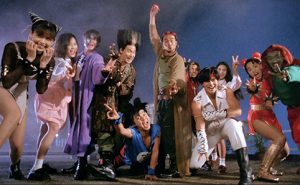 Future Cops (1993) – This slapstick Hong Kong comedy was based on the game “Street Fighter” and arrived later in the year. To western eyes, the results were hypnotically bizarre. In fact, I can recall seeing the film via the bootleg market when it was making the rounds in the 90s. The plot is set in the future – several heroes from the game are cops. When Bison is arrested and stands trail, he sends his goons through time to find a teenage version of the judge presiding over the case (kind of like 1984’s The Terminator). The protagonists follow and meet with a dork whom they enlist to help them. Along the way, they help the kid deal with bullies. It’s a very low-budget film without a hint of subtlety. Ever wanted to see one of the good guys croon a love ballad completely out of the blue? You’ll see it here. The jokes come fast and are at times unfathomable, made even more amusing by the grammatically incorrect subtitles. At least the energy level is incredibly high with plenty of under-cranked fight scenes coming late in the film, making the end result something of a B-movie (or honestly, C-movie) guilty pleasure.
Future Cops (1993) – This slapstick Hong Kong comedy was based on the game “Street Fighter” and arrived later in the year. To western eyes, the results were hypnotically bizarre. In fact, I can recall seeing the film via the bootleg market when it was making the rounds in the 90s. The plot is set in the future – several heroes from the game are cops. When Bison is arrested and stands trail, he sends his goons through time to find a teenage version of the judge presiding over the case (kind of like 1984’s The Terminator). The protagonists follow and meet with a dork whom they enlist to help them. Along the way, they help the kid deal with bullies. It’s a very low-budget film without a hint of subtlety. Ever wanted to see one of the good guys croon a love ballad completely out of the blue? You’ll see it here. The jokes come fast and are at times unfathomable, made even more amusing by the grammatically incorrect subtitles. At least the energy level is incredibly high with plenty of under-cranked fight scenes coming late in the film, making the end result something of a B-movie (or honestly, C-movie) guilty pleasure.
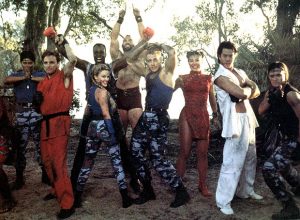 Street Fighter (1994) – The first official adaptation of the game starred Jean-Claude Van Damme as Guile, tasked with stopping a world domination plot formed by Raul Julia’s General Bison. To do this, the heroes must infiltrate the villain’s jungle base. Again, there was trouble on-set. Capcom served as co-financiers. Already suffering from budgetary constraints, the game company insisted on the movie meeting its release date, resulting in a rushed production schedule. Martial arts training sessions with the actors were cut and co-star Julia was suffering from stomach cancer and was unable to perform several physical tasks. Still, his amusingly over-the-top performance as Bison is perhaps the film’s only saving grace. In the end, the result was panned by critics and fans as being flat and dull. While a disappointment, it actually went on earn a $99 million at the box office against a $35 million budget. Fifteen years later, a reboot entitled Street Fighter: The Legend of Chun-Li (2009) arrived, but that flick fared even worse, earning a disastrous $8 million and garnering uniformly negative notices.
Street Fighter (1994) – The first official adaptation of the game starred Jean-Claude Van Damme as Guile, tasked with stopping a world domination plot formed by Raul Julia’s General Bison. To do this, the heroes must infiltrate the villain’s jungle base. Again, there was trouble on-set. Capcom served as co-financiers. Already suffering from budgetary constraints, the game company insisted on the movie meeting its release date, resulting in a rushed production schedule. Martial arts training sessions with the actors were cut and co-star Julia was suffering from stomach cancer and was unable to perform several physical tasks. Still, his amusingly over-the-top performance as Bison is perhaps the film’s only saving grace. In the end, the result was panned by critics and fans as being flat and dull. While a disappointment, it actually went on earn a $99 million at the box office against a $35 million budget. Fifteen years later, a reboot entitled Street Fighter: The Legend of Chun-Li (2009) arrived, but that flick fared even worse, earning a disastrous $8 million and garnering uniformly negative notices.
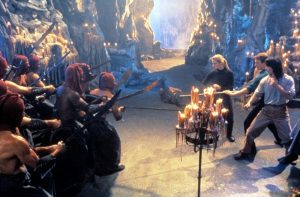 Mortal Kombat (1995) – This fighting game never had much of a story, leading producers to invent one of their own. Using Enter the Dragon (1973) as inspiration, they concocted a tournament that brings three human martial arts experts to face off against fighters from another world. Whoever wins the showdown is allowed to invade the other’s realm. If memory serves, it’s a cheese-fest that features a lot of action backed to techno music. Reviews weren’t strong for the feature. They stated that the fight scenes were well choreographed, but that the script and acting left… well… a whole lot to be desired. Regardless, it made a good profit for New Line Cinema, grossing $70 million against an $18 million dollar budget. A less successful sequel followed in 1997 and only earned half as much. Director Paul Anderson would go on to more box office success by shepherding the Resident Evil series to the big screen.
Mortal Kombat (1995) – This fighting game never had much of a story, leading producers to invent one of their own. Using Enter the Dragon (1973) as inspiration, they concocted a tournament that brings three human martial arts experts to face off against fighters from another world. Whoever wins the showdown is allowed to invade the other’s realm. If memory serves, it’s a cheese-fest that features a lot of action backed to techno music. Reviews weren’t strong for the feature. They stated that the fight scenes were well choreographed, but that the script and acting left… well… a whole lot to be desired. Regardless, it made a good profit for New Line Cinema, grossing $70 million against an $18 million dollar budget. A less successful sequel followed in 1997 and only earned half as much. Director Paul Anderson would go on to more box office success by shepherding the Resident Evil series to the big screen.
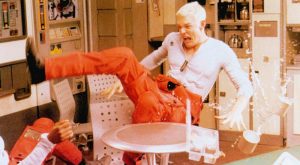 Wing Commander (1999) – This effort, based on the Origin systems space combat simulator game, gained a lot of media attention for its release. Although none of it had anything to do with the film itself – in fact, it was for the Star Wars Episode 1: The Phantom Menace trailer that preceded it. Seems like Fox knew they had a stinker on their hands and realized that this was their one chance to sell tickets. I still have a notice that I pulled off of a cinema marquee stating in print, “No refunds for Wing Commander!”, preventing buyers from leaving after seeing the trailer. An ominous sign to be sure. The movie was directed by the game’s creator and created an elaborate story for a pair of lieutenants in battle (played by Freddie Prinze Jr. and Matthew Lillard). Unfortunately, critics and fans alike criticized the movie. The press disliked the corny dialogue and called the special effects underwhelming, while some gamers were upset that the movie altered the visual style of the video game. Despite the Star Wars element adding publicity, it still only took in $11 million against its $30 million dollar price tag.
Wing Commander (1999) – This effort, based on the Origin systems space combat simulator game, gained a lot of media attention for its release. Although none of it had anything to do with the film itself – in fact, it was for the Star Wars Episode 1: The Phantom Menace trailer that preceded it. Seems like Fox knew they had a stinker on their hands and realized that this was their one chance to sell tickets. I still have a notice that I pulled off of a cinema marquee stating in print, “No refunds for Wing Commander!”, preventing buyers from leaving after seeing the trailer. An ominous sign to be sure. The movie was directed by the game’s creator and created an elaborate story for a pair of lieutenants in battle (played by Freddie Prinze Jr. and Matthew Lillard). Unfortunately, critics and fans alike criticized the movie. The press disliked the corny dialogue and called the special effects underwhelming, while some gamers were upset that the movie altered the visual style of the video game. Despite the Star Wars element adding publicity, it still only took in $11 million against its $30 million dollar price tag.
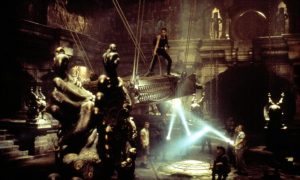 Lara Croft: Tomb Raider (2001) – The hugely popular archeologist-adventurer Lara Croft was next adapted to the big screen. Starring Angelina Jolie, this action picture sent the character through various caverns and hidden sites in competition with the sinister Illuminati to collect artifacts. Reviews were poor, saying that Jolie was well cast, but the plot was illogical and the feature lacked any sense of excitement overall. Personally, it also seemed kind of strange to watch an archeologist enter so many ancient locales and seemingly destroy them all in her quest for relics. Still, it was successful venture at the box office, grossing a little over double its $115 million dollar budget; questions about the film’s quality seemed to prevent it from attaining bigger numbers. A reviled sequel, Tomb Raider: Cradle of Life (2003) followed, bombed, and definitively ended the franchise.
Lara Croft: Tomb Raider (2001) – The hugely popular archeologist-adventurer Lara Croft was next adapted to the big screen. Starring Angelina Jolie, this action picture sent the character through various caverns and hidden sites in competition with the sinister Illuminati to collect artifacts. Reviews were poor, saying that Jolie was well cast, but the plot was illogical and the feature lacked any sense of excitement overall. Personally, it also seemed kind of strange to watch an archeologist enter so many ancient locales and seemingly destroy them all in her quest for relics. Still, it was successful venture at the box office, grossing a little over double its $115 million dollar budget; questions about the film’s quality seemed to prevent it from attaining bigger numbers. A reviled sequel, Tomb Raider: Cradle of Life (2003) followed, bombed, and definitively ended the franchise.
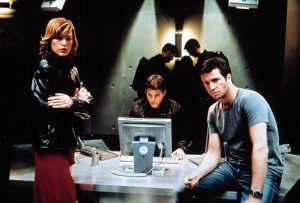 Resident Evil (2002) – Zombies really started to gain popularity in part to the well-liked and successful Capcom survival horror, third person video game. The first film based on the property involves a chemical leak in an underground facility that turns workers into monsters. An amnesiac must survive the chaos and figure out what the evil Umbrella corporation are actually working on. The movie was a commercial success that tripled its budget worldwide. Still, reception to the finished product wasn’t encouraging. Most felt that Mortal Kombat director Paul Anderson did well with the action, but directed the actors in a stiff manner and never felt the need to clarify or elaborate on what was happening or why. It was called derivative of similar (and better) horror pictures. Even still, this first chapter remains the highest rated (33% positive on RT) among the five films that have currently been released. And despite possessing all of the same problems, the sequels of 2004 and 2007 managed to build an even larger audience internationally for the franchise. The 3-D lensed Resident Evil: Afterlife (2010) mustered an incredible $296 million against a $60 million dollar budget and its follow up earned an impressive $240 million. As such, we’ll be getting one more of these films at the beginning of 2017.
Resident Evil (2002) – Zombies really started to gain popularity in part to the well-liked and successful Capcom survival horror, third person video game. The first film based on the property involves a chemical leak in an underground facility that turns workers into monsters. An amnesiac must survive the chaos and figure out what the evil Umbrella corporation are actually working on. The movie was a commercial success that tripled its budget worldwide. Still, reception to the finished product wasn’t encouraging. Most felt that Mortal Kombat director Paul Anderson did well with the action, but directed the actors in a stiff manner and never felt the need to clarify or elaborate on what was happening or why. It was called derivative of similar (and better) horror pictures. Even still, this first chapter remains the highest rated (33% positive on RT) among the five films that have currently been released. And despite possessing all of the same problems, the sequels of 2004 and 2007 managed to build an even larger audience internationally for the franchise. The 3-D lensed Resident Evil: Afterlife (2010) mustered an incredible $296 million against a $60 million dollar budget and its follow up earned an impressive $240 million. As such, we’ll be getting one more of these films at the beginning of 2017.
 Final Fantasy: The Spirits Within (2002) – This incredibly popular series of games came to theaters as an elaborate animated feature with Hollywood talent like Alec Baldwin, Ving Rhames, Steve Buscemi and Donald Sutherland voicing the characters. If any translation could have worked, it might have been this one since the games themselves consist of so many elaborate story scenes to begin with. The plot involved a female scientist teaming with soldiers to stop a phantom alien force. According to Rotten Tomatoes, it maintains the highest rating for a video game adaptation with an underwhelming 44% positive rating. Reviewers and audiences felt that the visuals were impressive, but found the story less than involving and believed it relied on stereotypes and clichés. It was an expensive experiment, costing $137 million and only managing to recoup $85 million in worldwide revenue. Ouch!
Final Fantasy: The Spirits Within (2002) – This incredibly popular series of games came to theaters as an elaborate animated feature with Hollywood talent like Alec Baldwin, Ving Rhames, Steve Buscemi and Donald Sutherland voicing the characters. If any translation could have worked, it might have been this one since the games themselves consist of so many elaborate story scenes to begin with. The plot involved a female scientist teaming with soldiers to stop a phantom alien force. According to Rotten Tomatoes, it maintains the highest rating for a video game adaptation with an underwhelming 44% positive rating. Reviewers and audiences felt that the visuals were impressive, but found the story less than involving and believed it relied on stereotypes and clichés. It was an expensive experiment, costing $137 million and only managing to recoup $85 million in worldwide revenue. Ouch!
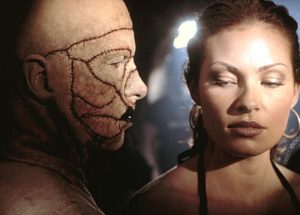 House of the Dead (2003) – At the bottom of the barrel is this adaptation of the first person shooter arcade game. Attempting to cash-in on the success of the Resident Evil film, the movie was as stinky as its rotting zombies. The plot follows heavily-armed, teenage heroes on an island. While they arrive for a rave, they are attacked by a barrage of the undead. This flick from director Uwe Boll became notorious for its horrible dialogue, clunky performances, awkward cutaways to the actual video and plenty of unintentional laughs. Today, it’s considered one of the most astonishingly bad movies of the decade. It barely grossed its $13 million dollar budget worldwide at the box office and yet become a notorious title that kind of exploded on DVD. A low-budget, straight to video sequel followed in 2006 that was only deemed a moderate improvement on its predecessor.
House of the Dead (2003) – At the bottom of the barrel is this adaptation of the first person shooter arcade game. Attempting to cash-in on the success of the Resident Evil film, the movie was as stinky as its rotting zombies. The plot follows heavily-armed, teenage heroes on an island. While they arrive for a rave, they are attacked by a barrage of the undead. This flick from director Uwe Boll became notorious for its horrible dialogue, clunky performances, awkward cutaways to the actual video and plenty of unintentional laughs. Today, it’s considered one of the most astonishingly bad movies of the decade. It barely grossed its $13 million dollar budget worldwide at the box office and yet become a notorious title that kind of exploded on DVD. A low-budget, straight to video sequel followed in 2006 that was only deemed a moderate improvement on its predecessor.
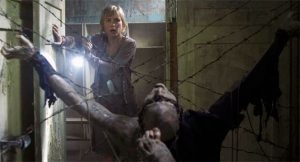 Silent Hill (2006) – Here’s another horror effort featuring weird creepy crawlies in an abandoned ghost town. A mother with a sick child disappears in the locale and the father hunts them down, encountering all sorts of disturbing creatures along the way. There was a lot of potential in this franchise, but once again critics were unimpressed. Almost all felt that it had some great visuals and atmospheric moments, but most felt that it lacked compelling characters and a convincing story. They were also troubled by the slow pacing – many felt that the two plus hour running time was more than excessive. Public reaction was muted and disappointing as well. It grossed $97 million worldwide, but cost an expensive $50 million to produce, rendering it less profitable than hoped for. A lower-budgeted 3-D sequel was released in 2012, but it fared even worse with the press and at the box office.
Silent Hill (2006) – Here’s another horror effort featuring weird creepy crawlies in an abandoned ghost town. A mother with a sick child disappears in the locale and the father hunts them down, encountering all sorts of disturbing creatures along the way. There was a lot of potential in this franchise, but once again critics were unimpressed. Almost all felt that it had some great visuals and atmospheric moments, but most felt that it lacked compelling characters and a convincing story. They were also troubled by the slow pacing – many felt that the two plus hour running time was more than excessive. Public reaction was muted and disappointing as well. It grossed $97 million worldwide, but cost an expensive $50 million to produce, rendering it less profitable than hoped for. A lower-budgeted 3-D sequel was released in 2012, but it fared even worse with the press and at the box office.
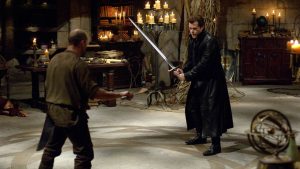 In the Name of the King: A Dungeon Siege Tale (2007) – Again, inspired by the success of fantasy films like The Lord of the Rings and Narnia series, Uwe Boll (House of the Dead, Far Cry) set on making an $60 million dollar epic based on the “Dungeon Siege” role-playing release from Microsoft Game Studios. The plot involves a farmer who attempts to rescue his kidnapped wife from an evil wizard. Well, the final result was definitely longer and larger in scale than his previous efforts, but it wasn’t any better. Notices and reactions were abominable, criticizing the bizarre casting of just about any celebrity available in supporting roles as well as the awful writing and clunky dialogue. Worldwide, it barely earned one sixth of the money spent on the production, meaning that even bad movie fans couldn’t handle this one.
In the Name of the King: A Dungeon Siege Tale (2007) – Again, inspired by the success of fantasy films like The Lord of the Rings and Narnia series, Uwe Boll (House of the Dead, Far Cry) set on making an $60 million dollar epic based on the “Dungeon Siege” role-playing release from Microsoft Game Studios. The plot involves a farmer who attempts to rescue his kidnapped wife from an evil wizard. Well, the final result was definitely longer and larger in scale than his previous efforts, but it wasn’t any better. Notices and reactions were abominable, criticizing the bizarre casting of just about any celebrity available in supporting roles as well as the awful writing and clunky dialogue. Worldwide, it barely earned one sixth of the money spent on the production, meaning that even bad movie fans couldn’t handle this one.
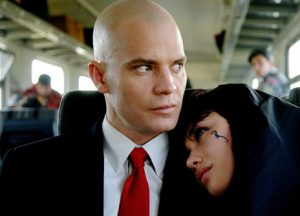 Hitman (2007) – This game about a cloned, genetically engineered assassin-for-hire which lets the player hunt down targets was also adapted for the big screen. Along the way, he begins to question his employers after rejecting their orders to kill a witness. Unfortunately, there were also troubles behind-the-scenes. The director credited was removed in post-production after disagreements about the tone; sections were re-shot and the film was reedited by a hired hand. Again, this effort flopped with reviewers. They wrote that the plot was conventional and predictable, with a series of well edited action scenes that didn’t add up to much more than an average action movie experience. Additionally, many felt that while the explanations may have been acceptable in a game, they sounded absurd in a narrative feature. It was a profitable, but the bad press didn’t encourage anyone to attempt immediate follow-up. Still, it has a small base of supporters. The franchise was completely rebooted in 2015, but the results were a complete and utter disaster.
Hitman (2007) – This game about a cloned, genetically engineered assassin-for-hire which lets the player hunt down targets was also adapted for the big screen. Along the way, he begins to question his employers after rejecting their orders to kill a witness. Unfortunately, there were also troubles behind-the-scenes. The director credited was removed in post-production after disagreements about the tone; sections were re-shot and the film was reedited by a hired hand. Again, this effort flopped with reviewers. They wrote that the plot was conventional and predictable, with a series of well edited action scenes that didn’t add up to much more than an average action movie experience. Additionally, many felt that while the explanations may have been acceptable in a game, they sounded absurd in a narrative feature. It was a profitable, but the bad press didn’t encourage anyone to attempt immediate follow-up. Still, it has a small base of supporters. The franchise was completely rebooted in 2015, but the results were a complete and utter disaster.
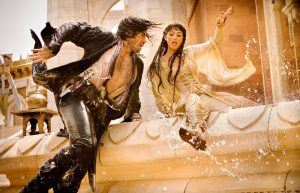 Prince of Persia: The Sands of Time (2010) – Just because you’re Disney doesn’t mean you can escape the genre curse. This take on the 2003 Ubisoft game for Playstation 2 got the big Hollywood treatment, boasting a $200 million dollar price tag and a lot of talent in front of and behind the camera. The story follows a fugitive prince out to stop a villain from obtaining a magical dagger that can turn back time. But while the game itself is considered one of the best of all time, the response to the film was muted. At the time, people weren’t crazy about the casting of Jake Gyllenhaal as the title character. While critics didn’t hate the movie, most gave it mildly negative reviews, calling the story a bit bland. They also felt the constant action didn’t make up for the broadly drawn characters and script flaws. It underperformed and only ended up taking in $336 million worldwide. Yet, as of this writing, this title stands as the highest grossing film based on a video game.
Prince of Persia: The Sands of Time (2010) – Just because you’re Disney doesn’t mean you can escape the genre curse. This take on the 2003 Ubisoft game for Playstation 2 got the big Hollywood treatment, boasting a $200 million dollar price tag and a lot of talent in front of and behind the camera. The story follows a fugitive prince out to stop a villain from obtaining a magical dagger that can turn back time. But while the game itself is considered one of the best of all time, the response to the film was muted. At the time, people weren’t crazy about the casting of Jake Gyllenhaal as the title character. While critics didn’t hate the movie, most gave it mildly negative reviews, calling the story a bit bland. They also felt the constant action didn’t make up for the broadly drawn characters and script flaws. It underperformed and only ended up taking in $336 million worldwide. Yet, as of this writing, this title stands as the highest grossing film based on a video game.
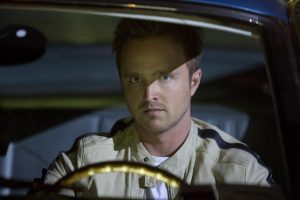 Need for Speed (2014) – Executive produced by Steven Spielberg, this action flick involves a custom car builder/street-racer who gets out of jail and immediately seeks revenge for the death of one of his friends. He enters a secretive race (kind of like a darker, grittier version of The Gumball Rally or The Cannonball Run) to face off against the foe. Based on the popular EA racing game series of the same name, the screenwriters could have done anything. Clearly, they went in a strange direction, mixing stern and serious characters with preposterous and silly car stunts. The awkward mix between the realistic and the absurd resulted in the press disliking the results. At 132 minutes, they called it too lengthy for a cheesy B-movie and specifically criticizing the first act for being to drawn out and slow in its introductions. In the end, the movie actually turned a profit, earning just over three times the film’s $66 million budget. EA are reportedly trying to get a sequel off of the ground, but it hasn’t found much traction.
Need for Speed (2014) – Executive produced by Steven Spielberg, this action flick involves a custom car builder/street-racer who gets out of jail and immediately seeks revenge for the death of one of his friends. He enters a secretive race (kind of like a darker, grittier version of The Gumball Rally or The Cannonball Run) to face off against the foe. Based on the popular EA racing game series of the same name, the screenwriters could have done anything. Clearly, they went in a strange direction, mixing stern and serious characters with preposterous and silly car stunts. The awkward mix between the realistic and the absurd resulted in the press disliking the results. At 132 minutes, they called it too lengthy for a cheesy B-movie and specifically criticizing the first act for being to drawn out and slow in its introductions. In the end, the movie actually turned a profit, earning just over three times the film’s $66 million budget. EA are reportedly trying to get a sequel off of the ground, but it hasn’t found much traction.
 The Angry Birds Movie (2016) – This mobile app game, which involves using a slingshot to hurl birds at pigs, was turned into an animated feature that promises to explain why the avian heroes are so darned angry. The familiar characters were welcome on the big screen and in a couple of weeks the $70 million dollar production has already taken in $230 million worldwide from family audiences – it appears likely that the film will overtake Price of Persia as the top-grossing film based on a game (although the upcoming Warcraft may usurp both films). Not that critics were any more impressed. It’s ranked as 43% positive on Rotten Tomatoes. The press have stated that while the movie is harmless enough, the jokes are really juvenile (even by family film standards) and the game itself is far more entertaining.
The Angry Birds Movie (2016) – This mobile app game, which involves using a slingshot to hurl birds at pigs, was turned into an animated feature that promises to explain why the avian heroes are so darned angry. The familiar characters were welcome on the big screen and in a couple of weeks the $70 million dollar production has already taken in $230 million worldwide from family audiences – it appears likely that the film will overtake Price of Persia as the top-grossing film based on a game (although the upcoming Warcraft may usurp both films). Not that critics were any more impressed. It’s ranked as 43% positive on Rotten Tomatoes. The press have stated that while the movie is harmless enough, the jokes are really juvenile (even by family film standards) and the game itself is far more entertaining.
Non-Specific Video Game Movies
So yeah, there aren’t a lot of good films listed above. However, when filmmakers use video games as a set up to deal with deeper themes, the results change dramatically. Some of these films still have their naysayers (and a few are pretty bad as well), but no one can argue that many of the features listed below are far more original, polished and accomplished than the direct game adaptations. If you’re looking for some video game related film options, you’ll find more to your liking on this list.
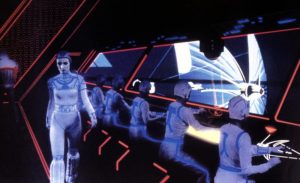 TRON (1982) – Disney’s early video game inspired effort follows a computer hacker who ends up inside a gaming system and must fight his way past a master control operator to escape. The movie inspired a popular coin-op arcade game that recreated some of the imagined exploits of the characters. Despite receiving a couple of Oscar nominations in technical categories, this actually wasn’t a big hit during its initial release. If memory serves, reviews were poor and the box office unimpressive (less than double its budget), but the subject matter and striking visuals left a big impression with kids of the era. It has since been reevaluated in a more positive light and is now considered a cult film. So much so that a sequel followed, called TRON: Legacy (2010). Almost exactly like the original, it impressed to some degree with more dazzling images, but the story and characters left many cold.
TRON (1982) – Disney’s early video game inspired effort follows a computer hacker who ends up inside a gaming system and must fight his way past a master control operator to escape. The movie inspired a popular coin-op arcade game that recreated some of the imagined exploits of the characters. Despite receiving a couple of Oscar nominations in technical categories, this actually wasn’t a big hit during its initial release. If memory serves, reviews were poor and the box office unimpressive (less than double its budget), but the subject matter and striking visuals left a big impression with kids of the era. It has since been reevaluated in a more positive light and is now considered a cult film. So much so that a sequel followed, called TRON: Legacy (2010). Almost exactly like the original, it impressed to some degree with more dazzling images, but the story and characters left many cold.
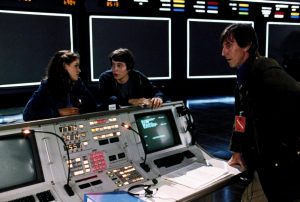 WarGames (1983) – The concept of computer hacking was at the center of this surprise summer hit, becoming the 5th highest grossing movie of the year. It follows a high school student who breaks an elaborate computer code and sneaks into the military mainframe. He begins playing a simulated game with the AI system that may result in the actual launch of nuclear weapons and start of WWIII. While highly exaggerated, lead Matthew Broderick made for a likable lead and the story’s relatable, real world stakes were incredibly high, adding to the tension. It was fun, but the subject matter also allowed the filmmakers to explore concerns with operating systems and Cold War relations. The movie fared very well with critics and was nominated for Best Original Screenplay that year.
WarGames (1983) – The concept of computer hacking was at the center of this surprise summer hit, becoming the 5th highest grossing movie of the year. It follows a high school student who breaks an elaborate computer code and sneaks into the military mainframe. He begins playing a simulated game with the AI system that may result in the actual launch of nuclear weapons and start of WWIII. While highly exaggerated, lead Matthew Broderick made for a likable lead and the story’s relatable, real world stakes were incredibly high, adding to the tension. It was fun, but the subject matter also allowed the filmmakers to explore concerns with operating systems and Cold War relations. The movie fared very well with critics and was nominated for Best Original Screenplay that year.
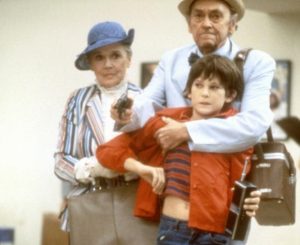 Cloak & Dagger (1984) – This movie came at the height of Steven Spielberg/Amblin mania. This smaller budgeted Universal release didn’t have anything to do with the director or his production company, but it is clearly inspired by it stylistically. The gaming system of Atari plays a big part. It features a highly imaginative, spy game-obsessed young boy who has recently lost his mother. He spends much of his time conversing with an imaginary friend (who also happens to be a secret agent). When the boy witnesses an actual assassination and is given a game cartridge containing government documents, he becomes the center of a real spy tale and the target of hit men. Naturally, no adults believe his claims, leaving the boy and his friend to fend for themselves. You can’t make movies like this one anymore. The kid’s life is consistently in mortal danger. He’s shot at and is forced to kill in order to survive. Reviews were positive for the film; it’s a decent enough effort that features some well-orchestrated, if goofy, chase scenes courtesy of director Richard Franklin (Road Games, Psycho II). Essentially, this is a story about a kid learning to accept and deal with the death of his mother, which adds a bit more character depth than one would expect from this type of film. Unfortunately, Atari went under by the time the movie came out – an intended game based on the one featured in the movie was never released.
Cloak & Dagger (1984) – This movie came at the height of Steven Spielberg/Amblin mania. This smaller budgeted Universal release didn’t have anything to do with the director or his production company, but it is clearly inspired by it stylistically. The gaming system of Atari plays a big part. It features a highly imaginative, spy game-obsessed young boy who has recently lost his mother. He spends much of his time conversing with an imaginary friend (who also happens to be a secret agent). When the boy witnesses an actual assassination and is given a game cartridge containing government documents, he becomes the center of a real spy tale and the target of hit men. Naturally, no adults believe his claims, leaving the boy and his friend to fend for themselves. You can’t make movies like this one anymore. The kid’s life is consistently in mortal danger. He’s shot at and is forced to kill in order to survive. Reviews were positive for the film; it’s a decent enough effort that features some well-orchestrated, if goofy, chase scenes courtesy of director Richard Franklin (Road Games, Psycho II). Essentially, this is a story about a kid learning to accept and deal with the death of his mother, which adds a bit more character depth than one would expect from this type of film. Unfortunately, Atari went under by the time the movie came out – an intended game based on the one featured in the movie was never released.
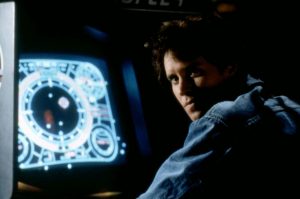 The Last Starfighter (1984) – Much like the previous title, this production also sought to recreate that Spielberg feeling. Thankfully, this one stands as perhaps the most effective attempt. A teenager living in a trailer park feels trapped in small town life and wants to move on to grander things. He gets his wish when he discovers that the coin-operated arcade game he’s obsessed with is actually a pilot-recruiting tool for an otherworldly war. It may be big, brash and less-than-subtle, but it maintains a sweetness and sense of wonder that completely works. The production was also one of the very first to employ the use of computer generated effects for many of its epic space battles. While admitting that the plot wasn’t exactly original, most critics consented at the time of release that this film was the best Star Wars knock-off out there. It was a box office sleeper that doubled its budget at the box office, but became even bigger on home video. It’s now regarded by many as a cult classic.
The Last Starfighter (1984) – Much like the previous title, this production also sought to recreate that Spielberg feeling. Thankfully, this one stands as perhaps the most effective attempt. A teenager living in a trailer park feels trapped in small town life and wants to move on to grander things. He gets his wish when he discovers that the coin-operated arcade game he’s obsessed with is actually a pilot-recruiting tool for an otherworldly war. It may be big, brash and less-than-subtle, but it maintains a sweetness and sense of wonder that completely works. The production was also one of the very first to employ the use of computer generated effects for many of its epic space battles. While admitting that the plot wasn’t exactly original, most critics consented at the time of release that this film was the best Star Wars knock-off out there. It was a box office sleeper that doubled its budget at the box office, but became even bigger on home video. It’s now regarded by many as a cult classic.
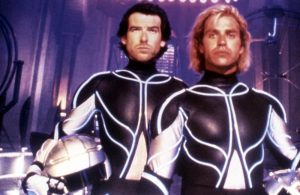 The Lawnmower Man (1992) – Well, this one isn’t so strong, but it did garner a lot of attention during its release. The story follows a scientist experimenting on the educational benefits of virtual reality. When the protagonist recruits a slow gardener for his program, the subject’s intelligence skyrockets. Unfortunately, the patient also decides to get revenge on those who have tormented him and develops delusions of grandeur. Reviews were mixed, with most feeling that the exploration of dangers in virtual reality technology was interesting, but the movie itself hokey. At least it featured groundbreaking visual effects (even if they don’t hold up well today). Apparently, a director’s cut is considered superior but has only been released on laserdisc and VHS and remains unavailable on DVD or Blu-ray. Legal battles troubled the production. It was advertised as a Stephen King adaptation even though the film was based on an original script. They producers simply borrowed one element from a King short story. The writer sued to have his name taken off of the film and won his case. Director Brett Leonard would later return to similar subject matter in the action film, Virtuosity (1995).
The Lawnmower Man (1992) – Well, this one isn’t so strong, but it did garner a lot of attention during its release. The story follows a scientist experimenting on the educational benefits of virtual reality. When the protagonist recruits a slow gardener for his program, the subject’s intelligence skyrockets. Unfortunately, the patient also decides to get revenge on those who have tormented him and develops delusions of grandeur. Reviews were mixed, with most feeling that the exploration of dangers in virtual reality technology was interesting, but the movie itself hokey. At least it featured groundbreaking visual effects (even if they don’t hold up well today). Apparently, a director’s cut is considered superior but has only been released on laserdisc and VHS and remains unavailable on DVD or Blu-ray. Legal battles troubled the production. It was advertised as a Stephen King adaptation even though the film was based on an original script. They producers simply borrowed one element from a King short story. The writer sued to have his name taken off of the film and won his case. Director Brett Leonard would later return to similar subject matter in the action film, Virtuosity (1995).
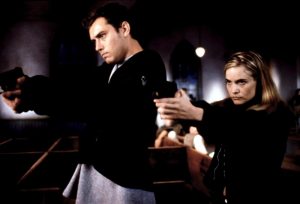 Existenz (1999) – This is by far the most underrated film on the list. David Cronenberg (Videodrome, The Fly, A History of Violence) uses modern gaming techniques to express concerns about our interactions with technology… in this case the obsessive and addictive world of gaming. Set in the future, a group of players are asked to preview a new virtual reality program and find themselves becoming unable to differentiate between the fantasy and the real world. It makes some incredibly effective points, as well as presenting chills and a surprising amount of dark humor. Originally developed for MGM, the studio turned down the project due to its complex story structure. Miramax and Alliance/Atlantis stepped in and helped the movie come together. The end result won festival awards but performed modestly at the box office. Still, this incredibly effective and eerie film was clearly ahead of its time and definitely deserves a reevaluation (and a Criterion Blu-ray release, please!).
Existenz (1999) – This is by far the most underrated film on the list. David Cronenberg (Videodrome, The Fly, A History of Violence) uses modern gaming techniques to express concerns about our interactions with technology… in this case the obsessive and addictive world of gaming. Set in the future, a group of players are asked to preview a new virtual reality program and find themselves becoming unable to differentiate between the fantasy and the real world. It makes some incredibly effective points, as well as presenting chills and a surprising amount of dark humor. Originally developed for MGM, the studio turned down the project due to its complex story structure. Miramax and Alliance/Atlantis stepped in and helped the movie come together. The end result won festival awards but performed modestly at the box office. Still, this incredibly effective and eerie film was clearly ahead of its time and definitely deserves a reevaluation (and a Criterion Blu-ray release, please!).
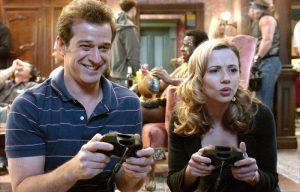 Grandma’s Boy (2006) – I wasn’t too fond of this wacky comedy, but in the decade since its original release it has become a big cult film in gamer circles. The Adam Sander-produced effort stars the supporting cast of many appearing the actor’s films. The plot itself tells the tale of a man in his late thirties who works for a video game design software firm. When he’s kicked out of his apartment, he is forced to move in with his grandmother and her two friends. Slapdash wackiness ensues. It pretty much tanked during its original run and if memory serves, the story and writing was pretty bland and generic overall. Perhaps because it contains tons of gamer references, over time it has developed a sizable following.
Grandma’s Boy (2006) – I wasn’t too fond of this wacky comedy, but in the decade since its original release it has become a big cult film in gamer circles. The Adam Sander-produced effort stars the supporting cast of many appearing the actor’s films. The plot itself tells the tale of a man in his late thirties who works for a video game design software firm. When he’s kicked out of his apartment, he is forced to move in with his grandmother and her two friends. Slapdash wackiness ensues. It pretty much tanked during its original run and if memory serves, the story and writing was pretty bland and generic overall. Perhaps because it contains tons of gamer references, over time it has developed a sizable following.
 The King of Kong: A Fistful of Quarters (2007) – This fascinating documentary presents one of the earliest looks at a group of real life arcade game enthusiasts. Specifically, it chronicles an amateur “King Kong” player who sets out to break an official record on his own machine. Viewers are then introduced to a very eccentric, competitive and occasionally petty field of gamers who take their hobby perhaps just a bit too seriously. In fact, there are cliques and a pecking order that feel threatened by the newcomer’s arrival, resulting in some surprising actions. The film is an amusing underdog story (even if some of the behaviors displayed verge on obsessive-compulsive) that scored with critics as well, who found it a fascinating and even enlightening look into a previously unseen social group.
The King of Kong: A Fistful of Quarters (2007) – This fascinating documentary presents one of the earliest looks at a group of real life arcade game enthusiasts. Specifically, it chronicles an amateur “King Kong” player who sets out to break an official record on his own machine. Viewers are then introduced to a very eccentric, competitive and occasionally petty field of gamers who take their hobby perhaps just a bit too seriously. In fact, there are cliques and a pecking order that feel threatened by the newcomer’s arrival, resulting in some surprising actions. The film is an amusing underdog story (even if some of the behaviors displayed verge on obsessive-compulsive) that scored with critics as well, who found it a fascinating and even enlightening look into a previously unseen social group.
 Scott Pilgrim vs. the World (2010) – While this is technically based on a comic book, this movie is all about gaming. A young man falls for a delivery girl and to win her love, he must defeat all seven of her ex-boyfriends in a series of challenges. Director Edgar Wright (Shaun of the Dead, Hot Fuzz, The World’s End) fills the movie with crazy visuals and battle scenes that reference video games from beginning to end. The film really impressed critics, who raved about the technical specs on display and the high-energy level of the cast. However, it didn’t connect with audiences at the time. This director also loves deeply flawed and selfish protagonists. Even though they all eventually change and find their way, it may have resulted in further backlash from casual moviegoers. In the end, the movie flopped at the box office. Still, go back and check it out – you’ll find a very well made and entertaining effort with an all-star cast that features early supporting appearances by the likes of Chris Evans, Brie Larson and Aubrey Plaza.
Scott Pilgrim vs. the World (2010) – While this is technically based on a comic book, this movie is all about gaming. A young man falls for a delivery girl and to win her love, he must defeat all seven of her ex-boyfriends in a series of challenges. Director Edgar Wright (Shaun of the Dead, Hot Fuzz, The World’s End) fills the movie with crazy visuals and battle scenes that reference video games from beginning to end. The film really impressed critics, who raved about the technical specs on display and the high-energy level of the cast. However, it didn’t connect with audiences at the time. This director also loves deeply flawed and selfish protagonists. Even though they all eventually change and find their way, it may have resulted in further backlash from casual moviegoers. In the end, the movie flopped at the box office. Still, go back and check it out – you’ll find a very well made and entertaining effort with an all-star cast that features early supporting appearances by the likes of Chris Evans, Brie Larson and Aubrey Plaza.
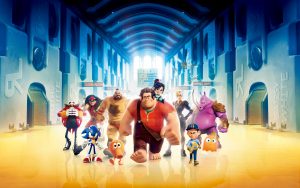 Wreck-It Ralph (2012) – Disney felt enough inspiration in this genre to create an animated adventure with John C. Reilly voicing a thuggish video game villain. The amusing concept involves a bad guy who tires of being overshadowed by heroes and enters into an identity crisis. He ends up a fish-out-of-water in a kid’s game and attempts to become a hero there by assisting an outcast little girl. This title met with both critical and popular success, grossing $471 million at the box office and receiving generally excellent notices from the press, who called it a witty, warm-hearted and very enjoyable effort. For game enthusiasts, it also comes with plenty of amusing references to familiar games (from the coin-ops “Tapper” and “Pac-Man” to “Street Fighter” and more recent fare like “Final Fantasy”) along the way.
Wreck-It Ralph (2012) – Disney felt enough inspiration in this genre to create an animated adventure with John C. Reilly voicing a thuggish video game villain. The amusing concept involves a bad guy who tires of being overshadowed by heroes and enters into an identity crisis. He ends up a fish-out-of-water in a kid’s game and attempts to become a hero there by assisting an outcast little girl. This title met with both critical and popular success, grossing $471 million at the box office and receiving generally excellent notices from the press, who called it a witty, warm-hearted and very enjoyable effort. For game enthusiasts, it also comes with plenty of amusing references to familiar games (from the coin-ops “Tapper” and “Pac-Man” to “Street Fighter” and more recent fare like “Final Fantasy”) along the way.
![]() Pixels (2015) – Well, it doesn’t end well for this grouping – this attempt from last year really laid an egg with reviewers and the public. Aliens receiving video game signals from a satellite invade the Earth using pixilated characters like Pac-Man, King Kong and Centipede. It’s a good concept, but the script didn’t do much with the idea. Instead, it was tepidly written as a typical Adam Sandler comedy. The internal logic of the story was flawed and the characters were barely written at all. And the jokes themselves comprised largely of bodily function humor (the arcade character Q’bert wetting himself being one example), with little insight into gaming or anything else. Many criticized it for being lazy and failing to take advantage of its concept. Believe it or not, while the movie underperformed at the North American box office, it still managed to turn a profit overall, earning $245 million worldwide against an $88 million production budget. Still, given the negative reaction, I wouldn’t hold out any hope for a sequel.
Pixels (2015) – Well, it doesn’t end well for this grouping – this attempt from last year really laid an egg with reviewers and the public. Aliens receiving video game signals from a satellite invade the Earth using pixilated characters like Pac-Man, King Kong and Centipede. It’s a good concept, but the script didn’t do much with the idea. Instead, it was tepidly written as a typical Adam Sandler comedy. The internal logic of the story was flawed and the characters were barely written at all. And the jokes themselves comprised largely of bodily function humor (the arcade character Q’bert wetting himself being one example), with little insight into gaming or anything else. Many criticized it for being lazy and failing to take advantage of its concept. Believe it or not, while the movie underperformed at the North American box office, it still managed to turn a profit overall, earning $245 million worldwide against an $88 million production budget. Still, given the negative reaction, I wouldn’t hold out any hope for a sequel.
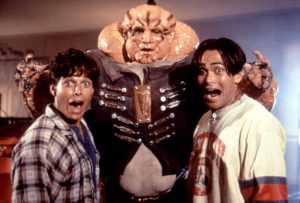 And now let’s get to the answer of my trivia question. Yes, the feature pictured with the headline is the 1994 adaptation of the arcade game, Double Dragon. It starred Robert Patrick, Alyssa Milano, Marc Dacascos and Scott Wolf. As you might have imagined, the movie was really, really bad. To no one’s surprise, it was a critical and box office flop at its time of release. It has not developed a cult following yet, so if you want to start the bandwagon on that one, go for it (just remember, you’re on your own)!
And now let’s get to the answer of my trivia question. Yes, the feature pictured with the headline is the 1994 adaptation of the arcade game, Double Dragon. It starred Robert Patrick, Alyssa Milano, Marc Dacascos and Scott Wolf. As you might have imagined, the movie was really, really bad. To no one’s surprise, it was a critical and box office flop at its time of release. It has not developed a cult following yet, so if you want to start the bandwagon on that one, go for it (just remember, you’re on your own)!
So, there you have it! Any personal favorites?


